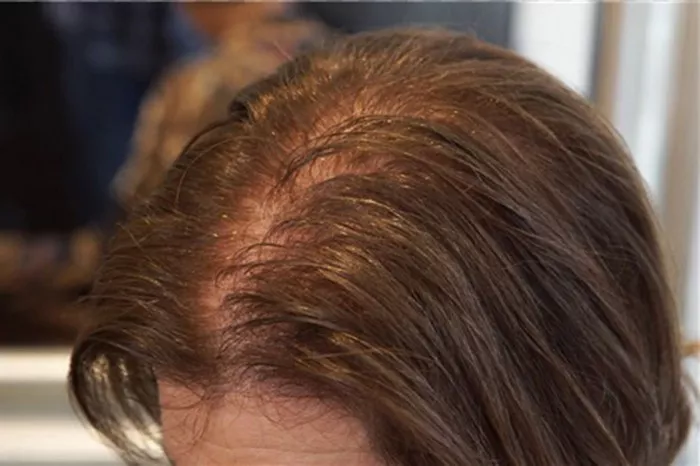Cancer, a term encompassing a myriad of diseases characterized by uncontrolled cell growth, brings with it a multitude of physical and emotional challenges. One of the distressing side effects that often accompanies cancer treatment is hair loss. While not all types of cancer result in hair loss, certain treatments, particularly chemotherapy, can lead to this common and visible consequence. In this article, we will delve into the relationship between cancer and hair loss, exploring the types of cancer most commonly associated with this side effect and the mechanisms that drive it.
Introduction to Hair Loss
Hair loss is a common and distressing phenomenon that can be triggered by various factors, including medical conditions, genetics, and lifestyle. Among these factors, cancer and its treatments, particularly chemotherapy, stand out as significant contributors to hair loss. The emotional impact of losing one’s hair can be profound, affecting an individual’s self-esteem and sense of identity. This article will explore the connection between cancer and hair loss, shedding light on the types of cancer commonly associated with this side effect and offering insights into coping strategies. Understanding the dynamics of hair loss in the context of cancer is crucial for those navigating the complexities of cancer treatment.
See Also: Can Hairfall Due to Dandruff Be Reversed: A Full Guide
Chemotherapy and Hair Loss: Unraveling the Connection
Hair loss during cancer treatment is most commonly associated with chemotherapy, a powerful medical intervention designed to target rapidly dividing cells, including cancer cells. Unfortunately, hair follicles, which are among the fastest-growing cells in the human body, also fall victim to the effects of chemotherapy.
Chemotherapy drugs work by inhibiting the division of cells, disrupting their growth and ultimately leading to cell death. Since hair follicles are in a constant state of growth, the impact of chemotherapy on these cells can result in the loss of hair. The extent of hair loss can vary from partial to complete, and the specific drugs used, as well as the dosage and duration of treatment, contribute to the severity of this side effect.
Cancers Commonly Associated with Hair Loss
While not all cancers lead to hair loss, some types are more frequently associated with this side effect due to the aggressive nature of their treatment plans. The following are examples of cancers that are commonly linked to hair loss during treatment:
1. Breast Cancer: Breast cancer is one of the most prevalent forms of cancer, affecting both men and women. Chemotherapy, a standard component of breast cancer treatment, often results in hair loss.
2. Ovarian Cancer: Ovarian cancer, which predominantly affects women, may involve chemotherapy as part of the treatment protocol, leading to hair loss.
3. Lung Cancer: Lung cancer, characterized by the abnormal growth of cells in the lungs, is often treated with chemotherapy, contributing to hair loss in affected individuals.
4. Hodgkin’s Lymphoma: A type of lymphoma, Hodgkin’s lymphoma is known for its impact on the lymphatic system. Chemotherapy used in the treatment of Hodgkin’s lymphoma commonly leads to hair loss.
5. Leukemia: Leukemia, a cancer of the blood and bone marrow, often requires intensive chemotherapy. As a result, individuals undergoing leukemia treatment may experience hair loss.
It is important to note that while chemotherapy is a major contributor to hair loss in cancer patients, other treatments such as radiation therapy may also have this side effect, albeit to a lesser extent.
Managing Hair Loss: Coping Strategies and Support
Understanding that hair loss is often a temporary but emotionally challenging aspect of cancer treatment, various coping strategies can be employed to help individuals navigate this aspect of their journey. Some of these strategies include:
1. Wig and Headwear Options: Many cancer patients choose to wear wigs or other head coverings to maintain a sense of normalcy and privacy during their treatment.
2. Scalp Cooling: Some chemotherapy centers offer scalp cooling systems, which aim to minimize hair loss by reducing blood flow to the hair follicles during chemotherapy sessions.
3. Emotional Support: Connecting with support groups, counseling services, and loved ones can provide emotional support during this challenging time. Sharing experiences with others who have gone through similar struggles can be particularly beneficial.
4. Hair Regrowth after Treatment: In most cases, hair loss during chemotherapy is temporary. Many individuals experience regrowth within a few months of completing treatment.
In conclusion
While not all types of cancer lead to hair loss, the aggressive nature of certain treatments, particularly chemotherapy, can result in this visible and often emotionally challenging side effect. Understanding the connection between cancer and hair loss, along with implementing coping strategies, can empower individuals facing cancer treatment to navigate this aspect of their journey with resilience and hope.


